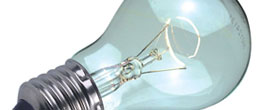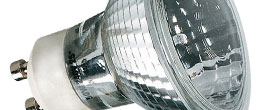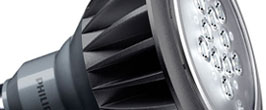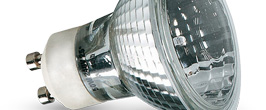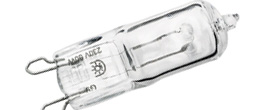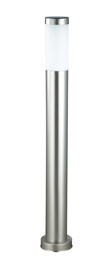You may think there’s not much to say about light switches, but they’re more sophisticated than might be assumed. There are various styles to choose from, terminology to negotiate, and then with dimmer switches the complex topic of compatibility arises. This guide aims to cast light over some of these issues, describing the types of switch available, and where they’re used.
Design choices
Light switches are designed in a variety of ways. Some are purely functional, whilst others have style in mind, too. Here are some of the common design features:
-
- Flat plate: extremely low-profile, usable only on perfectly flat walls or tiles.
- Low profile: a slim but raised profile that allows installation on uneven surfaces.
- Metal clad: usually designed with a white plastic switch and an impact-resistant metal wall plate, these are used in industrial environments or in domestic rooms where damage is more likely (e.g. garage, games room).
- Moulded: an inexpensive plastic switch for use in areas where appearance is of secondary importance (e.g. workplaces, utility rooms, larders). The BG White Moulded 10A 1 Gang 2 Way Light Switch offers great value under this category.
- Screwless: provides a neat finish with no visible fixings, and installs easily by clipping onto a rear mount.
- Weatherproof: electrical components are well protected against dust and rain, either directly or through use of a sealed enclosure.
- Time Delay Switch: saves energy by automatically switching off light after a set duration. Lyco sell a 1-way Electronic Time Delay Switch with a neon-lit button perimeter for easy visibility.
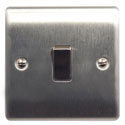
Terminology
Terminology is pretty straightforward in light switches. The word ‘gang’ describes the number of switches on a wall plate. For example, a 2-gang switch is really two switches on a single plate, capable of controlling one light each.
The term ‘way’ describes the ability of a switch to operate in conjunction with other switches in different locations. For instance, a ‘2-way switch’ is usable in pairs to control the same light from two places. These switches can also be wired for conventional 1-way use with a single light.
Anyone researching switches on the internet should be aware that US terminology is different. The 2-way switch is known as a 3-way switch (owing to its use of three terminals), whilst an intermediate switch in the UK is equal to an American 4-way switch. Intermediate switching is used when the light is required to be controlled from three or more places (e.g. in large halls).
Dimmer switches
Dimmer switches are useful for controlling mood and saving energy. They can extend lamp life, too, depending on the lamp technology.
The type of switch you’re most likely to encounter is the phase-cut dimmer. This works by cutting out parts of the voltage and reducing power to the light source. There are two types to consider:
Leading-edge dimmer

The leading-edge dimmer is commonly used with incandescent or halogen lighting. By far the most popular dimmer in existence, it is designed for inductive loads (e.g. magnetic low-voltage transformers), or resistive loads (e.g. incandescent).
Many modern LED lamps are backward compatible with this style of dimmer. This is especially true of products from larger manufacturers. However, the low wattage of LED lamps makes it difficult to meet the minimum load requirement of existing dimmer switches.
Trailing-edge dimmer
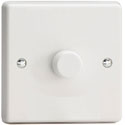 The more sophisticated trailing-edge dimmer is intended for capacitive loads (e.g. electronic low-voltage transformers or LED drivers), and resistive loads (e.g. incandescent).
The more sophisticated trailing-edge dimmer is intended for capacitive loads (e.g. electronic low-voltage transformers or LED drivers), and resistive loads (e.g. incandescent).
Some of the benefits of this dimmer include smooth, silent dimming and a lower minimum load for modern technologies. A ‘soft start’ feature is usually included, which prevents filament bulbs from prematurely expiring during a cold start.
The Varilight LED Compatible Dimmer range is an excellent choice for LED lighting circuits, whilst also offering compatibility with other technologies (including some dimmable CFLs). The award-winning Varilight V-Pro range is widely revered as one of the best LED dimmers on the market. This particular model has a minimum 2.5W load.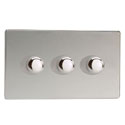
Various models from the Varilight V-Pro range are available from Lyco, including a 3-gang switch with a minimum 2.5W load per gang. By controlling multiple luminaires you can fine-tune areas of light and dark, which is a sure way of creating drama and ambience.
Bringer of light
Light switches are bringers of light, and though they’re part of everyday life, they also allow you to express yourself by adding finishing touches to décor. A wide choice of switches is available, from basic no-thrills to refined and stylish. You can even assume the role of lighting technician, using a dimmer switch to creatively control layers of light.
Why not take a look at our full range of switches and dimmers.
Looking for more advice or inspiration? Take a look at our Lighting Advice section.

Andrew Evangelidis Head of Buying
Andrew is an experienced buying professional who takes an entrepreneurial approach to identify new lighting solutions and ensure Lyco have first-to-market ranges for our customers. Having previously worked for well known brands such as Wickes, Carphone Warehouse and Toys R Us, Andrew has now turned his hand to sourcing commercial lighting and ensure our customers receive top brand quality products at marketing leading prices. He manages a team of commercial and decorative buyers who travel the world finding new products that our customers don’t even know they need yet.












 Table lamps provide a great final touch in a conservatory, emitting a warm, soft glow of light to help make it a comfortable space, our top pick is this large statement lamp, the Berkley Table Lamp.
Table lamps provide a great final touch in a conservatory, emitting a warm, soft glow of light to help make it a comfortable space, our top pick is this large statement lamp, the Berkley Table Lamp.
